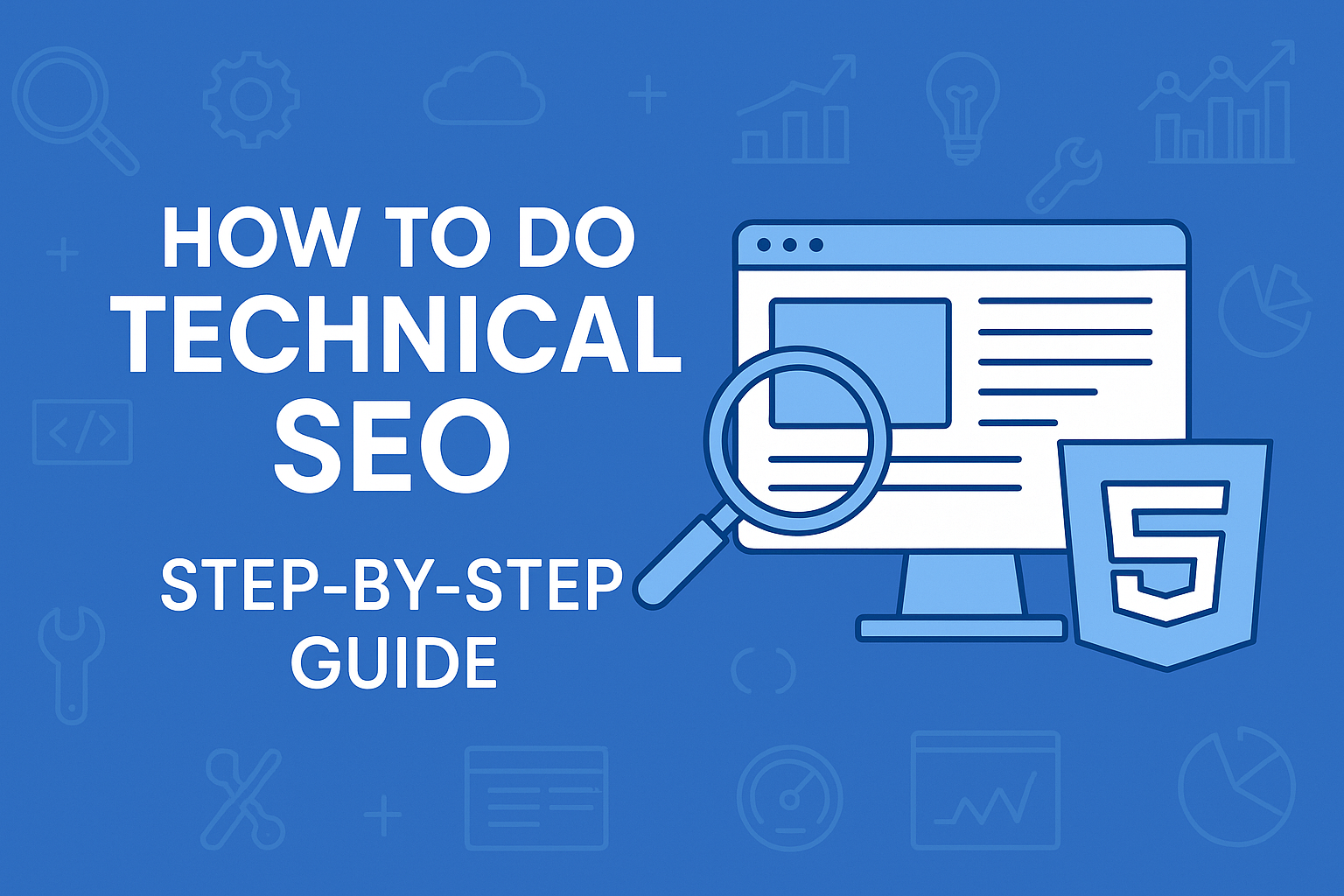
Why Technical SEO Matters More Than You Think
If you’re struggling to get your website to rank on Google—even after publishing great content and building backlinks—it’s time to look under the hood. That’s where technical SEO comes in.
Technical SEO ensures your website is easy for search engines like Google to crawl, index, and understand. Without it, your content may never reach your audience, no matter how good it is.
In this blog, you’ll learn how to do technical SEO step by step, why it matters, and whether you need to be a coding wizard to handle it. We’ll keep it simple, practical, and beginner-friendly.
How Is Technical SEO Done?
Technical SEO involves optimizing your website’s structure to improve its visibility in search engines. Here’s a step-by-step breakdown with examples:
1. Make Sure Your Website Is Crawlable
Search engines like Google use bots (e.g., Googlebot) to crawl and index your site. If these bots can’t access your pages, they won’t appear in search results, no matter how great your content is.
- Example: You launch a new “Services” page, but it’s not showing up on Google. On checking your robots.txt file, you find the line Disallow: /services/. This is unintentionally blocking search engines from crawling that page By removing the disallow rule, you make the page crawlable, allowing Google to index and rank it.
- Tool: Google Search Console → Coverage tab shows crawl or indexing issues.
- Fix: Check your robots.txt and make sure you’re not blocking pages you want Google to see.
2. Create and Submit an XML Sitemap
A sitemap tells search engines where to find your important pages.
- Example: An e-commerce site should include category and product pages in its sitemap.
- Tool: Use Yoast SEO (WordPress) or Screaming Frog to generate a sitemap.
- Fix: Submit it to Google via Search Console.
3. Use HTTPS for Secure Browsing
Security is a ranking factor. Your site should load over HTTPS, not HTTP.
- Example: If your site says “Not Secure” in the browser, you need an SSL certificate.
- Fix: Install an SSL certificate (free via Let’s Encrypt or through your hosting provider).
4. Fix Broken Links and 404 Errors
Broken pages harm user experience and SEO.
- Example: A blog link that leads to a deleted page shows a 404 error.
- Tool: Use Broken Link Checker or Screaming Frog.
- Fix: Redirect the old URL to a relevant working page (301 Redirect).
5. Optimize Site Speed
Google considers site speed a major ranking factor because it directly affects user experience. A slow website increases bounce rate, frustrates users, and signals to search engines that your site isn’t user-friendly.
Example: Imagine someone visits your online store to buy a product, but the images take forever to load, and the checkout page lags. They’ll probably leave and buy from a faster competitor. That’s a lost sale—and a red flag for search engines.
Tools to Test Site Speed:
- Google PageSpeed Insights – Gives a performance score and shows what’s slowing down your site.
- GTmetrix – Offers a detailed breakdown of page load time, image sizes, and more.
Fixes to Improve Speed:
- Compress large images using tools like TinyPNG or convert them to modern formats like WebP.
- Minify CSS, JavaScript, and HTML to reduce file size and load time.
- Enable browser caching so returning visitors don’t have to re-download resources.
- Use a caching plugin like WP Rocket or W3 Total Cache to store pages and load them faster.
Pro Tip: Always test your website on both desktop and mobile versions—mobile speed is especially important for SEO.
6. Ensure Mobile-Friendliness
Over 60% of searches happen on mobile. Your site must be responsive.
- Example: If your site elements are cut off on a phone, that’s a red flag.
- Tool: Google’s Mobile-Friendly Test.
- Fix: Use a mobile-responsive theme or update your CSS layout to fit all screen sizes.
7. Use Structured Data (Schema Markup)
Schema helps Google understand your content better and show rich snippets.
- Example: Recipe websites use schema to show cooking time, ratings, and ingredients in search.
- Tool: Schema Markup Generator or Yoast SEO.
- Fix: Add JSON-LD code or use a plugin.
Is Technical SEO Difficult?
At first glance, technical SEO may sound intimidating, but it doesn’t have to be.
If you can follow instructions, use plugins or tools, and troubleshoot a bit, you can handle the basics. Many tasks, like checking crawl errors or submitting sitemaps, don’t need deep tech knowledge.
- Example: WordPress users can handle many SEO tasks with the Yoast SEO plugin—no coding required.
- Pro Tip: Start with audits using Google Search Console or SEMrush Site Audit to identify what needs fixing.
Does Technical SEO Require Coding?
The short answer: Not always.
While coding helps in advanced fixes, you can do most basic technical SEO tasks without touching code.
Here’s a breakdown:
- No coding needed:
- Submitting XML sitemaps
- Adding redirects via plugins
- Installing SSL certificates
- Compressing images
- Submitting XML sitemaps
- Some coding helps with:
- Adding structured data manually (JSON-LD format)
- Fixing core web vitals (like reducing JS execution time)
- Creating custom robot directives
- Adding structured data manually (JSON-LD format)
Example: A Shopify store owner can improve technical SEO using built-in settings and apps without knowing any HTML or CSS.
So, while coding helps, it’s not a must for getting started.
Bonus Tips for a Strong Technical SEO Foundation
- Enable lazy loading for images and videos.
- Avoid duplicate content with proper canonical tags.
- Use a clean, SEO-friendly URL structure (example.com/blog/seo-guide instead of example.com/page?id=123).
- Audit your site regularly using tools like Ahrefs or SEMrush.
Start Small, Think Big with Technical SEO
Technical SEO is like the engine of your website—it keeps everything running smoothly behind the scenes. The best part? You don’t need to be a developer to get started.
Whether you’re running a personal blog or managing an ecommerce store, these technical SEO steps will give your site the solid foundation it needs to rank higher, load faster, and deliver better user experiences.
